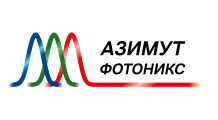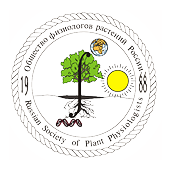Новости науки и практики // Октябрь 2024

Early exposure to phosphorus starvation induces genetically determined responses in Sorghum bicolor roots
Mikwa et al identified novel physiological and genetic responses to phosphorus starvation in sorghum diversity lines that augment current knowledge of breeding for climate-smart crops in Europe.
https://link.springer.com/article/10.1007/s00122-024-04728-4
Modulation of Plant Transcription Factors and Priming of Stress Tolerance by Plant Growth-Promoting Bacteria: A Systematic Review
https://academic.oup.com/aob/advance-article/doi/10.1093/aob/mcae166/7758362
The auxin efflux carrier PIN1a regulates vascular patterning in cereal roots
Barley (Hordeum vulgare) is an important global cereal crop and a model in genetic studies. Fusi et al’s phenotypic screening of a TILLING mutant collection identified line TM5992 exhibiting a short-root phenotype compared with wild-type (WT) Morex background.
https://nph.onlinelibrary.wiley.com/doi/10.1111/nph.19777
Boquila trifoliolata mimics leaves of an artificial plastic host plant
Upon discovery that the Boquila trifoliolata is capable of flexible leaf mimicry, the question of the mechanism behind this ability has been unanswered. Here, we demonstrate that plant vision possibly via plant-specific ocelli is a plausible hypothesis.
https://www.tandfonline.com/doi/full/10.1080/15592324.2021.1977530
Photosynthetic light requirement near the theoretical minimum detected in Arctic microalgae
Hoppe et al present measurements from the MOSAiC field campaign in the central Arctic Ocean that reveal the resumption of photosynthetic growth and algal biomass buildup under the ice pack at a daily average irradiance of not more than 0.04 ± 0.02 µmol photons m−2 s−1 in late March. This is at least one order of magnitude lower than previous estimates (0.3–5 µmol photons m−2 s−1) and near the theoretical minimum light requirement of photosynthesis (0.01 µmol photons m−2 s−1).
https://www.nature.com/articles/s41467-024-51636-8
Disruption in Jasmonic Acid Biosynthesis Influences Metabolism of Other Hormones in Arabidopsis
Gupta et al studied how the disruption in the JA biosynthetic pathway in Arabidopsis thaliana affects the homeostasis of other hormones by measuring the concentrations of various hormones, including ABA (abscisic acid), AUX [auxin, specifically IAA (indole-3-acetic acid)], CKs (cytokinins), GAs (gibberellins), and SA (salicylic acid) in 10 days old Arabidopsis JA-deficient aos (allene oxide synthase) knock-out mutant seedlings.
https://link.springer.com/article/10.1007/s00344-024-11446-0
Plant scientists link phospholipid sensing with control of gene expression
Plant scientists have long known that phosphorus is a crucial component in plant growth. A major discovery by a Kansas State University (K-State) biologist and her lab is leading to a better understanding of how plants detect and use that resource—potentially leading to more efficient production of crops for food, fiber and fuel.
https://nph.onlinelibrary.wiley.com/doi/10.1111/nph.19917
A mathematical model of photoinhibition: exploring the impact of quenching processes
Nies et al present a mathematical model with a dynamic description of the photosynthetic electron transport chain, non-photochemical quenching and photoinhibition.
https://academic.oup.com/insilicoplants/article/6/1/diae001/7607799
Research team designs efficient bioenergy crops that need less water to grow
Drought stress has long been a limiting factor for crop production around the world, a challenge exacerbated by climate change.
https://phys.org/news/2024-09-team-efficient-bioenergy-crops.html
How iron and metabolic constraints can aid gene discovery for photosynthesis and biofuel production
The single-cell green alga Chromochloris zofingiensis is an emerging model organism for photosynthesis and metabolism research. Previous research has shown that with the addition of glucose, Chromochloris zofingiensis shuts off photosynthesis, reroutes its metabolism, and accumulates high amounts of lipids (biofuel precursors) and astaxanthin (a high-value antioxidant).
https://phys.org/news/2024-09-iron-metabolic-constraints-aid-gene.html
https://www.nature.com/articles/s41467-024-50170-x
Decoding the functionality of plant transcription factors
This review provides a comprehensive understanding of these factors and mechanisms defining the activity of transcription factors (TFs). Understanding the dynamic nature of TFs has practical implications for modern molecular breeding programmes, as it provides insights into how to manipulate gene expression to optimize desired traits in crops.
https://academic.oup.com/jxb/article-abstract/75/16/4745/7676309
New method enables noninvasive plant magnetic resonance imaging
The "omics" technologies—genomics, transcriptomics, proteomics, and metabolomics—are at the forefront of discovery in modern plant science and systems biology. In contrast to the rather static genome, however, the metabolome and the products measured in it are very dynamic. In science, metabolome refers to the totality of all small molecules, also known as metabolites, in a biological cell, tissue or organism. Their concentration generally fluctuates greatly, both spatially and temporally.
https://www.science.org/doi/10.1126/sciadv.adq4424
Host-driven phenotypic and phenological differentiation in sympatric races of a parasitic plant
de Vega et al investigated phenological and phenotypic differentiation and potential reproductive isolation among three sympatric genetic races of Cytinus hypocistis (Cytinaceae) - an extreme endophytic holoparasite with a high degree of host specialisation.
https://www.sciencedirect.com/science/article/pii/S0367253024001695
Новости
Новости науки и практики // Ноябрь 2024
Обзор научных новостей, опубликованных во всемирной паутине за последний месяцНовости науки и практики // Октябрь 2024
Обзор научных новостей, опубликованных во всемирной паутине за последний месяцСобрание (ассамблея) научных обществ
МГУ, 11-13 октября 2024 г.


Объявления
Записей не найдено.



